5 zero-emission machines contractors should know about
26 July 2022
Since the turn of the century, construction has accelerated its use of both low-emission and zero-emission equipment. As attitudes towards the environment change, and governmental regulations become more stringent, the demand for environmentally friendly equipment has continued to increase.
Indeed, the formation of the Clean Construction Declaration, an initiative launched by the C40 Cities Climate Leadership Group, will likely serve to increase the number of construction projects that will aim to reduce emissions produced by equipment.
As such, manufacturers are continuing to provide the sector with zero-emission vehicles and sustainable solutions. So here, ICON rounds up five pieces of zero-emission equipment that construction contractors should know about.
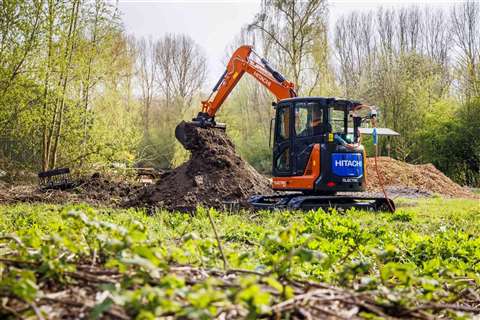 The ZX55U-6EB by Hitachi. (Photo: Hitachi)
The ZX55U-6EB by Hitachi. (Photo: Hitachi)
1. Hitachi ZX55U-6EB mini excavator
The ZX55U-6EB mini excavator by Hitachi Construction Machinery (Europe) is a 5-tonne batttery powered machine that is the company’s first for the European market.
With battery output of 39 kWh, the machine is powered by lithium-ion batteries and can be connected to a CEE 400VAC 3-phase power source, which enables the machine to work while charging.
With a maximum swing radius of 1,860mm, the short tail swing design is said to make maneuverability while in operation in tight spaces easier.
A communication terminal allows owners to monitor battery charging status, machine location information, and electric system malfunctions, which the company say contributes to lower life-cycle costs.
According to Hitachi, the ZX55U-6EB also offers reduced noise levels, enhanced efficiency, fewer maintenance requirements and less downtime than conventional models.
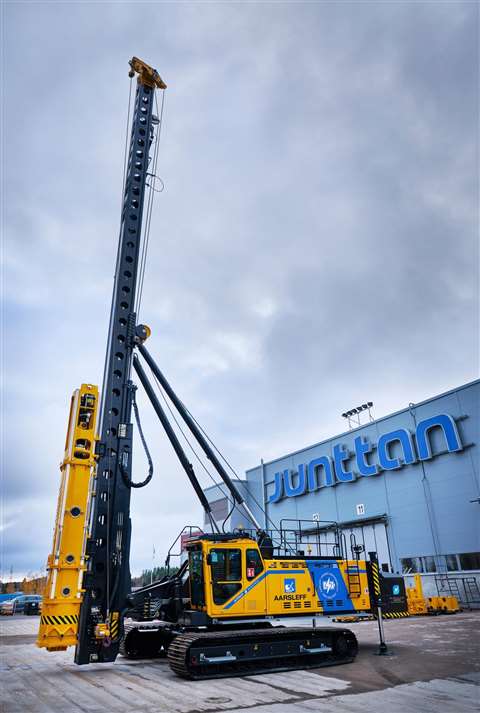 Junttan Electric PMx2e. (Photo: Junttan/Danfoss)
Junttan Electric PMx2e. (Photo: Junttan/Danfoss)
2. Junttan PMx2e battery-powered rig
In what is thought to be a world first, the Junttan PMx2e, a battery powered, fully electric pile driving rig is the result of a collaboration between Danfoss and Junttan.
The rig has a maximum pile length of 20 m and has two separate 396kWh battery packs that can be replaced. The battery pack is situated at the back of the rig and is said to be as effective as normal diesel-powered Junttan rigs.
According to the companies, the PMx2e emits zero-emissions while in operation and consumes less energy per pile.
The machine is said to reduce noise pollution when compared with a diesel-powered rig and is controlled by an Editron electric motor that generates power from a battery pack.
The Editron motor is used to mimic the operational performance of a diesel rig as closely as possible, the companies say.
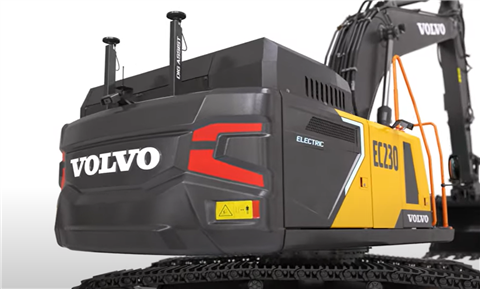 Volvo CE’s 22-tonne EC230 electric excavator. (Photo: Volvo CE)
Volvo CE’s 22-tonne EC230 electric excavator. (Photo: Volvo CE)
3. Volvo EC230 crawler excavator
Developed in China, the 22-tonne EC230 is the first electrified zero-local-emissions crawler excavator from Volvo CE.
The machine runs on four 66kW lithium-ion batteries, which the company say can last up to eight hours, and is based on the diesel-powered EC220E.
It is also fully compatible with a Combo2-Plug, which is one of the global standard combined DC charging systems for electric vehicles up to 500kW.
According to Volvo, the EC230 can deliver a reduction in running costs of between 60% and 70%. Although the excavator isn’t yet available commercially, Volvo recently sent it to the Asian market to be tested, in preperation for its official launch “in the near future.”
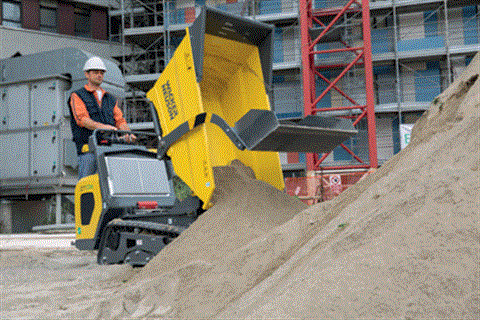 The DT10e has been used on a Swiss project that required all machines to be zero-emission. (Photo: Wacker Neuson)
The DT10e has been used on a Swiss project that required all machines to be zero-emission. (Photo: Wacker Neuson)
4. Wacker Neuson DT10e track dumper
With a payload of 1,000kg and a fully electrical engine, the DT10e track dumper by Wacker Neuson is said to be ideal for indoor projects.
Like the EC230, its battery lasts up to eight hours when fully charged. The company say that under maximum load, the battery lasts for 3.5 hours.
A lithium-ion-phosphate battery that requires a 100V power connection powers the DT10e.
The machine has three electric motors, two for the engine which perform at 2kW and one for the gear pump drive system.
The DT10e was recently used on a project in Switzerland, alongside two Wacker Neuson Zero Tail excavators, both of which were also zero-emission.
The track dumper transported materials on site, with the company utilising the low location of the batteries which they believe made it a stable solution and useful in the rough terrain of the Alps.
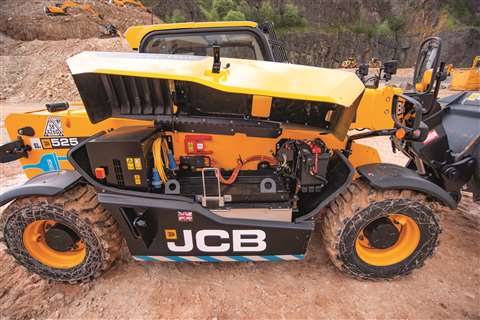 The 525-60E electric telehandler has a 2,500kg lifting capacity. (Photo: JCB)
The 525-60E electric telehandler has a 2,500kg lifting capacity. (Photo: JCB)
5. JCB 525-60E compact telehandler
Launched in 2020, the 525-60E compact telehnadler from JCB is part of the comany’s electric E-TECH range.
Redesigned from the diesel version, the 2.5-tonne machine has a 2,500kg lifting capacity, a maximum lift height of 6m and is said to reduce noise and environmental impact.
It is equipped with a 24kWh lithium-ion battery from industrial forklift manufacturer Jungheinrich which can be fully charged in eight hours with a 3kW on-board charger.
Similar to its diesel counterpart, the 525-60E has an electro-hydraulic valve block and an identical servo lever in the cab which the company say makes transitioning to the machine easier.
The machine has two separate electric motors, a 17kW traction motor that drives through a four-wheel drive dropbox and a 22kW electric motor that powers the boom functions.





